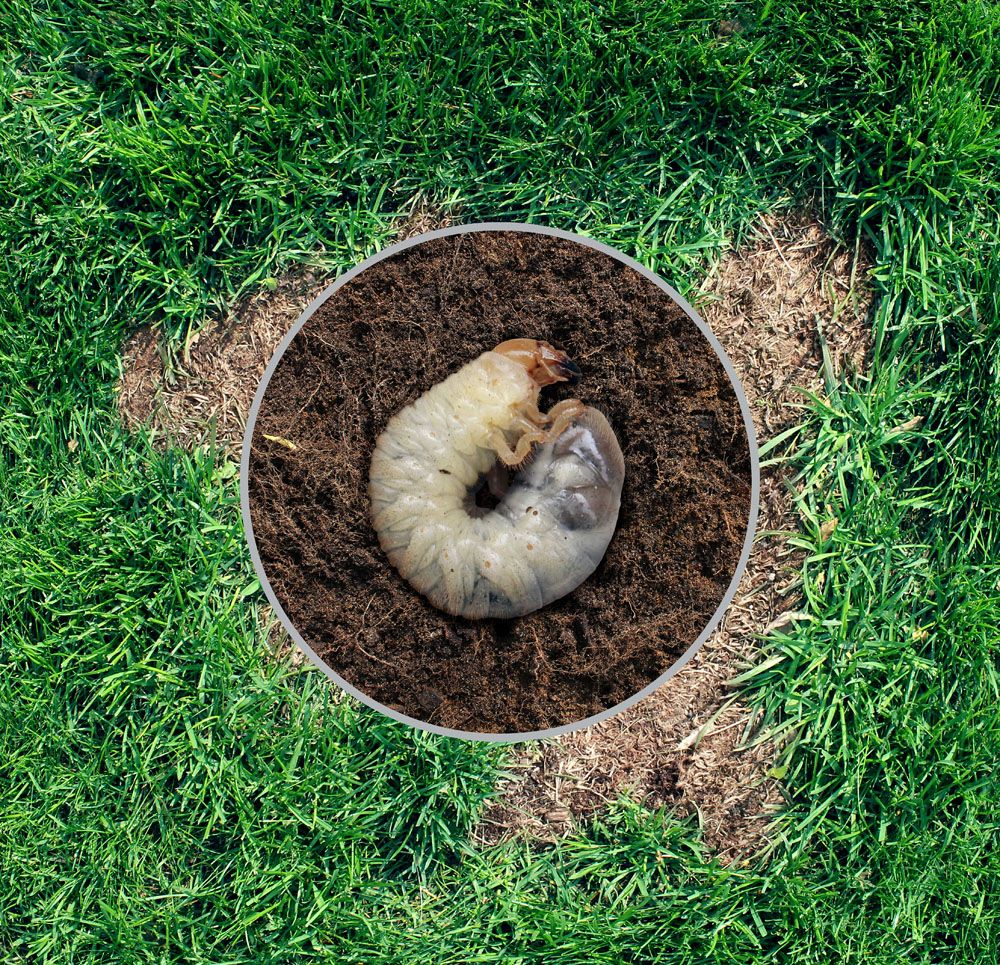
Grubs
Grubs: How to Prevent and Treat Grubs?
What are Lawn Worms
Lawn Grubs, sometimes known as White Grubs, are the juvenile stages of numerous Scarab Beetle species, including Japanese Beetles, June bugs, and European Chafers. These white insects have soft bodies and legs close to their heads. They feed on grass roots causing patches of lawn grass to wilt. A white grub develops into an adult Beetle and emerges from the earth to lay eggs.
June Beetles have a three-year life cycle, whereas Scarab Beetles have a one-year life cycle. In early to midsummer, adults emerge from the ground and deposit eggs. Eggs hatch two weeks after being deposited, depending on soil moisture and temperature. As soon as the next generation of root-eating bugs hatches, they begin feasting. Early October is the busiest feeding season. The pests usually labor a few inches beneath the soil surface, but as winter approaches, they dig deeper.
How to Control Grubs?
You most likely have grubs if you have insect difficulties in the summertime and dead areas of grass in your yard by midsummer. Japanese beetles, June beetles, chafers, and other beetle larvae are known as grubs. These white, C-shaped grubs feed on natural soil materials, especially grassroots. Grubs, the larval or juvenile stage of numerous kinds of beetles and chafers, can harm your lawn by eating on its roots. Grasses that are healthier can withstand more grub feeding, whereas all grass can withstand some grub feeding. A grub infestation will result in areas of thinning grass that will progressively grow in size.
Grubs eat grassroots and organic soil, killing parts of the lawn grass. To discover if grubs are to blame for your dead areas, lift a section of your grass. If Grubs are to blame, you will be able to pick out the grass and notice that it has no roots. In your well-irrigated grass, irregularly shaped dead patches appear in late summer or early fall. Birds, skunks, armadillos, or raccoons digging through your grass can also cause Grub damage to your lawn. These creatures also dig and consume Earthworms, so be sure there are no Grubs before proceeding with treatment.
What to Do If Your Lawn Is Infested with Grubs?
The grass must be replanted since the grubs destroy the roots. Simply treat the area like any other bare patch repair, and keep the seed wet while it germinates. The basic stages are as follows:
- Mow the lawn and eliminate any loose or dead spots.
- Your grass should be aerated.
- Reseed the lawn.
- Water seeds well to help them grow roots.
- Keep an eye out for flipped-over chunks of fresh lawn; just turn them back over.
A pesticide may not be necessary on healthy turf with a few grubs. It’s important to remember that a healthy turf with regular rain or irrigation may support a grub population of five or more per square foot without causing visible grass damage. In reality, most well-kept lawns are free of obvious grub damage.
